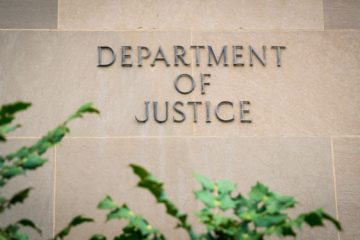In a realm where aspirations often clash with the pragmatic demands of governance, it’s crucial to navigate the delicate balance between visionary ideals and practical execution. Charles Sauer’s newest article in The Washington Examiner highlights a poignant example of this collision, spotlighting how the fanciful ambitions of a state administration imperil a critical facet of transportation infrastructure.
He writes:
“As a child, and an adult, it is fun to think about impossible things such as flying elephants, magical schools, or wooden puppets that turn into real boys. For entrepreneurs, it is important to dream big, set big goals, and daydream about the impossible. However, when politicians use these ideas to create public policy, we have problems.
For instance, the California Air Resources Board is working on a regulation that would mean trains could no longer operate in its state. That isn’t the goal of the regulation, but it would be its consequence.
California’s goal was to have zero-emission trains, which isn’t necessarily a bad goal. But it is attempting to codify the goal in regulation, which is a bad idea. California needs a waiver granted by the Environmental Protection Agency to implement the measure.
If carbon emissions are bad, then how could zero-emission trains be bad? Well, because they don’t exist. Yes, California is calling for a regulation on trains that would require an industry to implement a technology it doesn’t have. And the parts of it that do exist can’t be implemented in time even to come close to fulfilling the regulations.
To make matters worse, when looking at something such as train regulations, even if California backed off of the “zero” emissions part of what regulators are proposing, the new burdens would ripple across the country, causing cost increases everywhere.
Thankfully, there has been some pushback on this impossible plan, most recently by a group of more than 30 conservative organizations in a letter to the EPA that called on the agency to deny the waiver request. The letter pushes back on both the process and the content of the regulation, concluding:
“Ultimately, the negative impact of this CARB rule on commerce and consumers cannot be overstated. It will drive up labor, production, shipping, and supply chain costs. This will create higher prices for goods and services for consumers of goods reliant on rail transportation. At a time when the federal government is focused on driving down inflation, this is the last thing the administration should consider or approve.”
From a national perspective, it is nice to have 50 state experiments going on. But when a state is going after an impossible goal, and that goal will have national implications, it makes sense for the EPA to take its role in approving this regulation seriously.
It is also understandable that California wants zero-emission trains. But instead of pursuing a policy that would cost everyone in the country, even if it were possible, what if the government instead attempted to help create this new technology by promoting innovation? What if California promoted research and development with the goal of advancing technology that would make transitioning over to more energy-efficient vehicles a no-brainer and even more profitable?
Like the first people who built railroads across the United States, California regulators would do better to look out into the future and imagine what is possible rather than forcing businesses to conform to their impossible fairy tale. Admittedly, offering carrots rather than sticks is difficult policy, but innovation is a lot better than government at achieving the impossible.”


